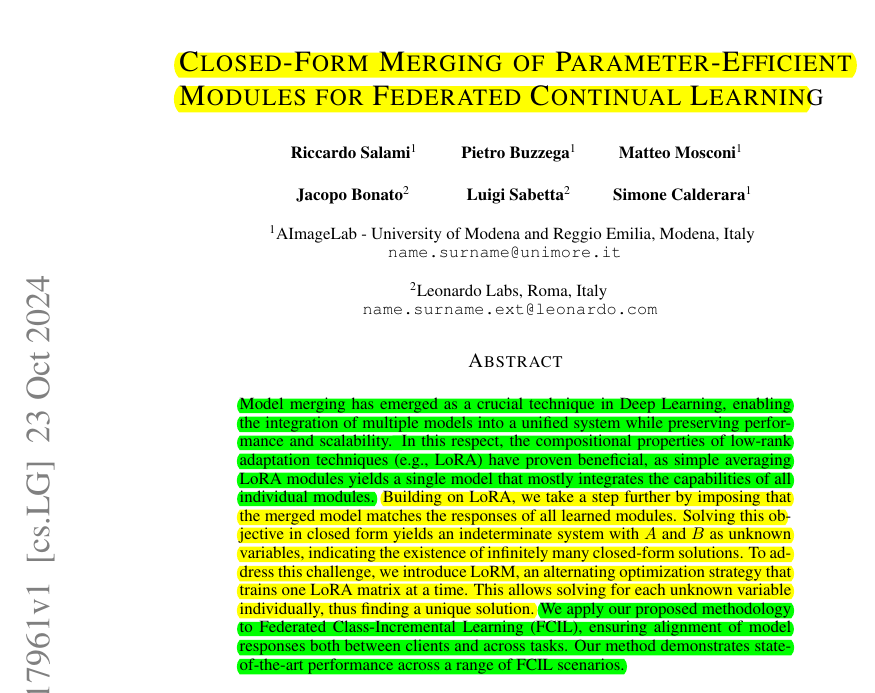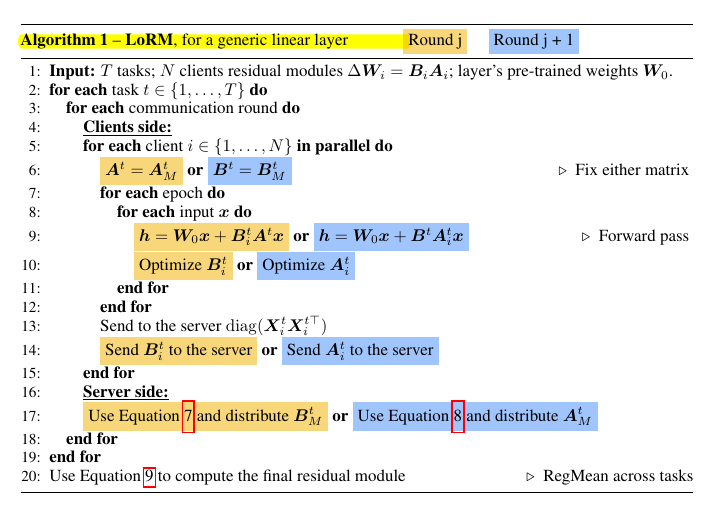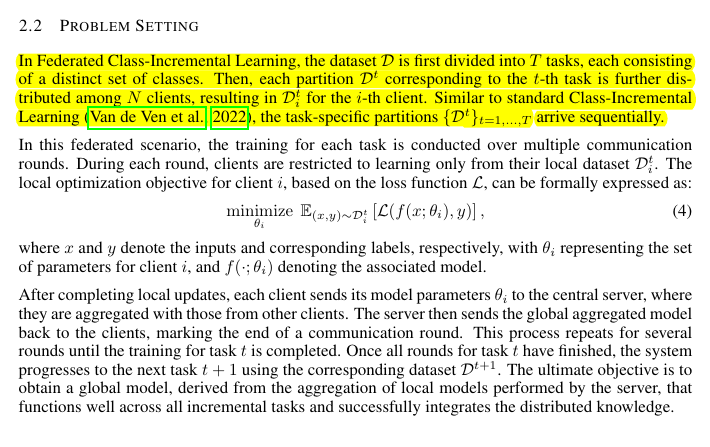Closed-form merging of parameter-efficient modules for Federated Continual Learning
LoRM (Low-rank Regression Mean) merges LoRA modules with closed-form solution while preserving privacy in federated learning
LoRM (Low-rank Regression Mean) merges LoRA modules with closed-form solution while preserving privacy in federated learning
• Outperformed 10 competing methods on CIFAR-100 and ImageNet-R
🎯 Original Problem:
Merging parameter-efficient modules in federated continual learning is challenging due to the need to preserve model responses across clients and tasks while maintaining data privacy and efficiency.
🔧 Solution in this Paper:
• Introduces LoRM (Low-rank Regression Mean) - a closed-form solution for merging LoRA modules
• Uses alternating optimization strategy:
Trains one LoRA matrix (A or B) while keeping other fixed
Applies RegMean formulation to merge matrices across clients
• Maintains privacy by only sharing diagonal elements of Gram matrices
• Employs task-specific classification heads that concatenate for final merging
• Implements 5 communication rounds per task, each with 5 epochs
💡 Key Insights:
• Solving indeterminate system in LoRA merging through alternating optimization
• Privacy preservation through sharing only Gram matrix diagonals
• Strong performance on both in-domain and out-of-domain tasks
• Faster convergence compared to existing methods
📊 Results:
• Achieved 83.19% accuracy on CIFAR-100 (β=0.5)
• Showed 75.62% accuracy on ImageNet-R (β=0.5)
• Demonstrated 80.44% accuracy on out-of-domain EuroSAT dataset
The key technical components and methodology of LoRM
LoRM employs an alternating optimization strategy that trains one LoRA matrix at a time, either A or B, while keeping the other fixed.
This allows finding unique solutions for merging the modules.
The method uses closed-form equations derived from RegMean to merge matrices across clients and tasks.





